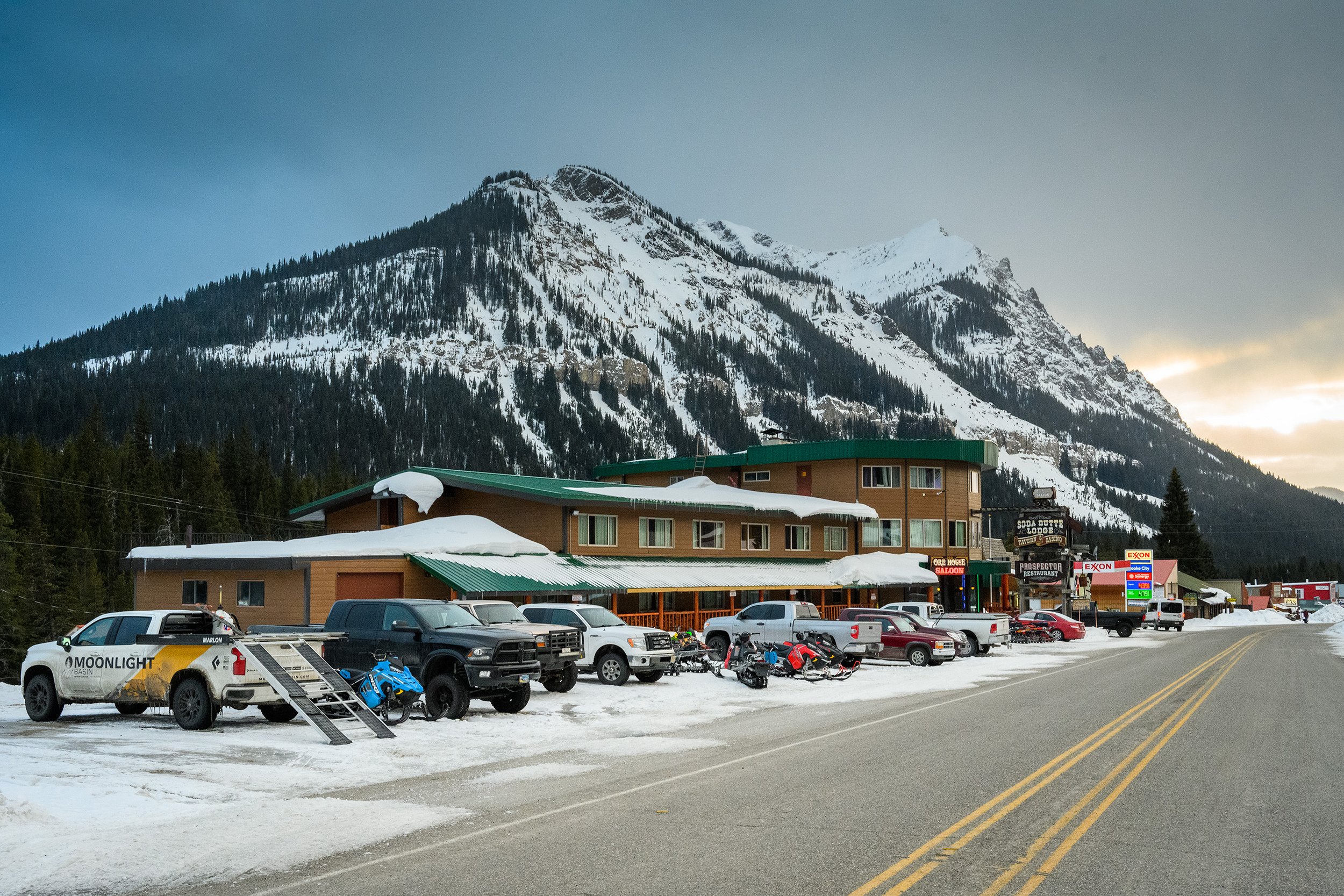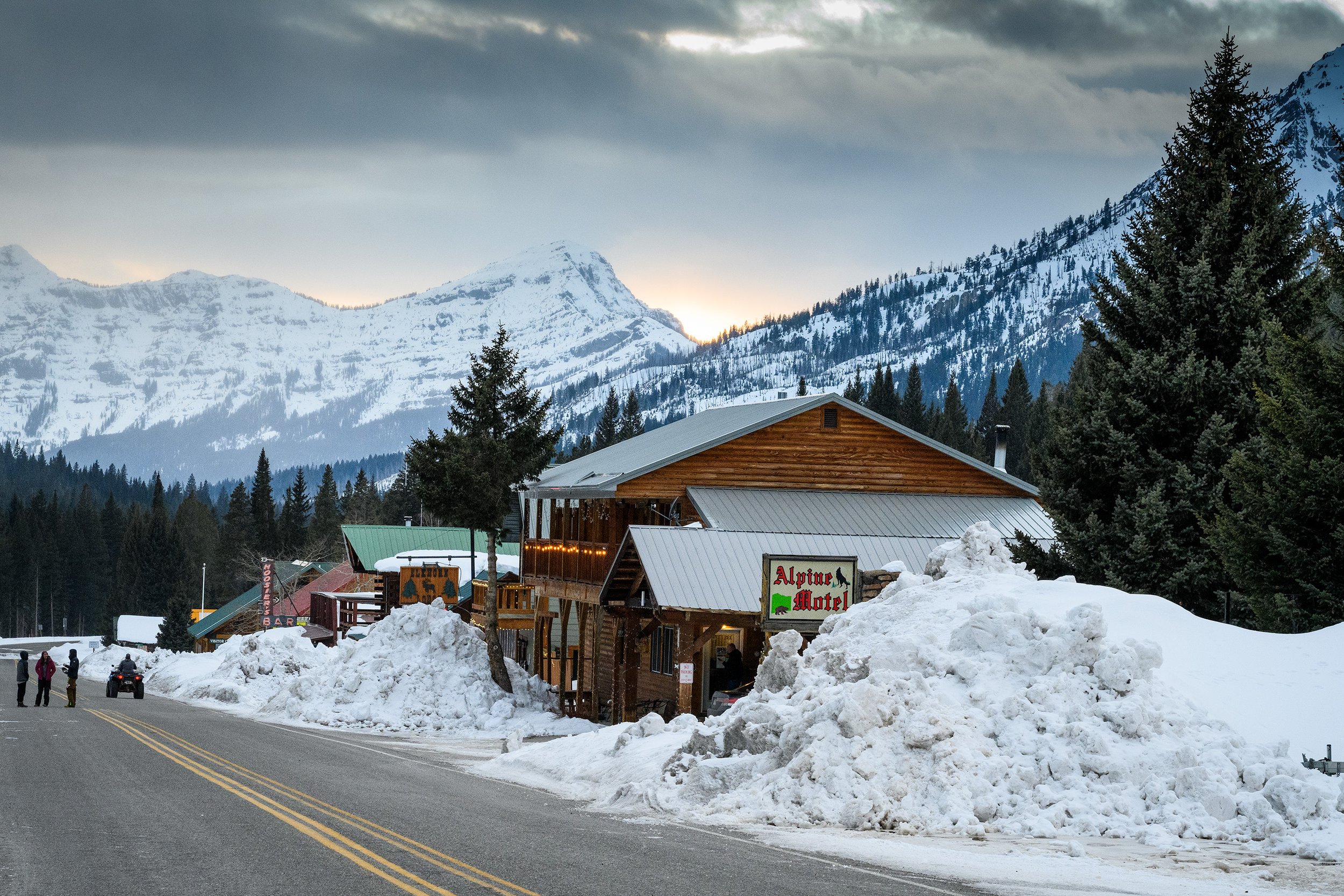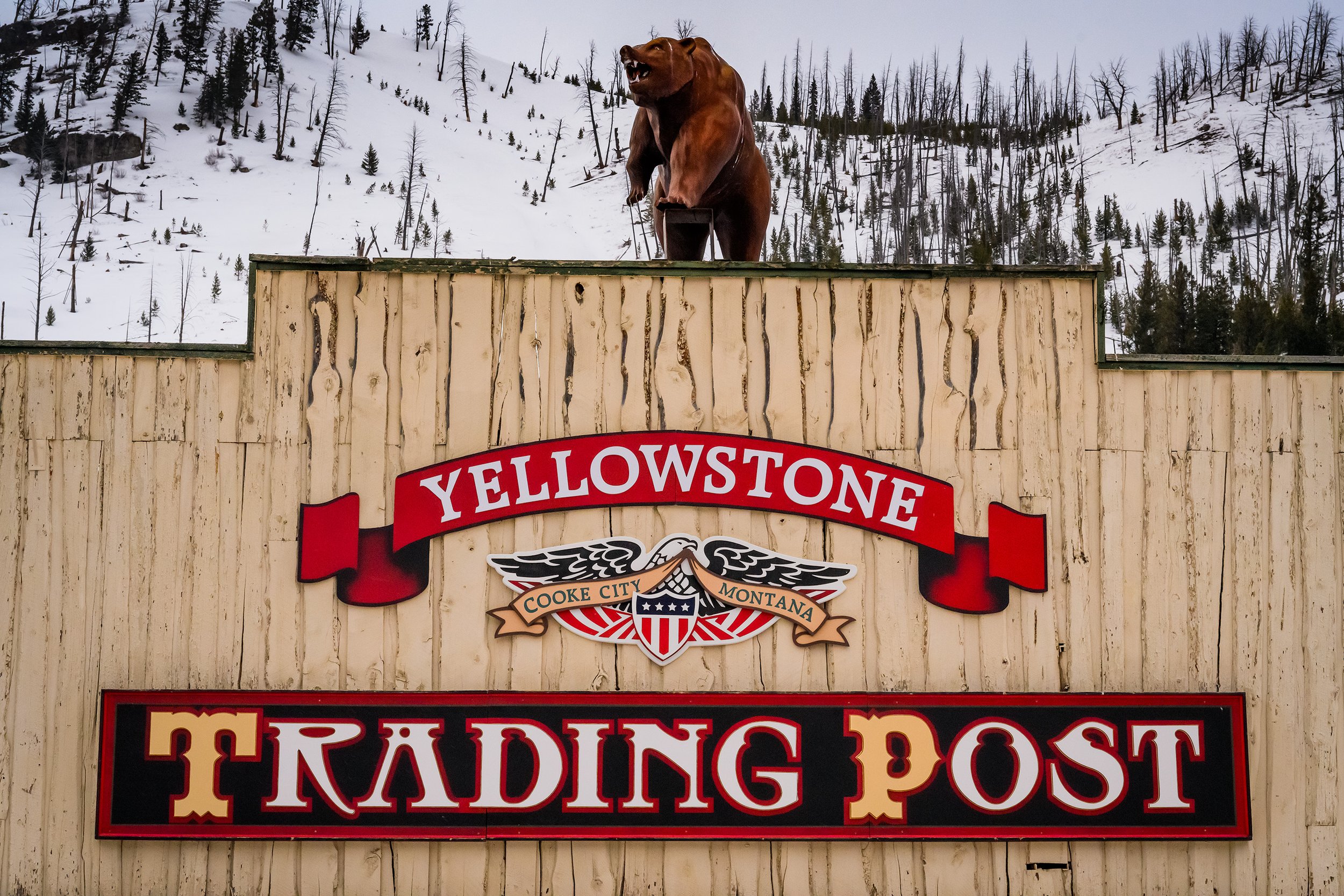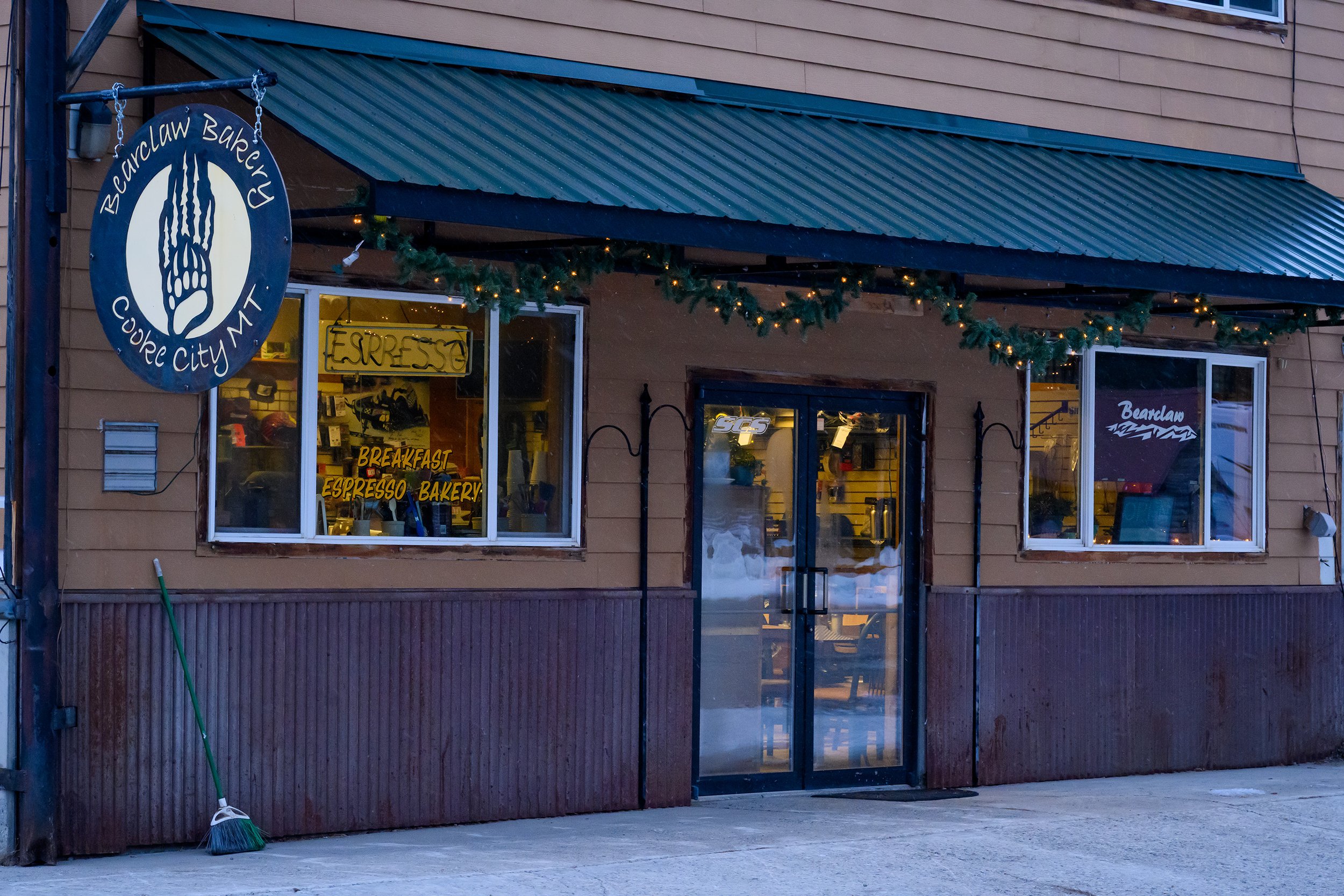Yellowstone National Park in Winter
The North Entrance at Yellowstone National Park.
At the North Entrance, the imposing Roosevelt Arch greats visitors. In winter the roads to the West, Northeast, East and South Entrances are closed November to mid May, so the only open road in the park to vehicle traffic is the North Entrance, from the gateway town of Gardiner, the Albright Visitor Center is open and the Mammoth Hot Springs are open in the winter, although the hotel at Mammoth Hot Springs is not open. Trips from Bozeman and Jackson can explore the park as day trips on special snow coaches capable of navigating the roads off season.
Photos from the North Entrance (Click on any image to enlarge)
Detail of the Yellowstone National Park map. Roads into the park from the west (West Yellowstone MT and Bozeman MT) south (from Jackson WY) and both eastern entrances (Red Lodge MT or Cody WY) are closed November to Mid May. Only the North Entrance (from Gardiner/Livingstone/Bozeman) is open in the winter.
Pronghorn seen at the entrance to the park
One of the advantages of traveling in winter, despite the bitter cold, is that the snow in higher elevations encourages the ungulates (hoofed animals) to graze a lower elevations which are closer to the road. In turn their predators, such as the wolves, have an easier time hunting during winter. Because of this, winter provides one of the best times to explore the wildlife in Yellowstone; when its closer to the road and easier to spot against the white snow and the best opportunity to spot predators hunting from the road.
Bison wander into the mammoth Hot Springs/Albright Visitor Center where there were fewer people than bison and some grass to graze on.
From L-R: Officer’s Row at the Albright Visitors Center, Natural Habitat’s purpose built van for exploring Yellowstone and the Northern Entrance “gateway” town of Gardiner, MT
Our small group trip was organized by Natural Habitat Adventures, a travel company focused on nature and wildlife.
The Mammoth Hot Springs are particularly scenic with the steam and snow in winter. Various minerals create colorful formations.
Mammoth Hot Springs
While we enjoyed the Mammoth Hot Springs, we had come to brave the below zero temperatures in hopes of seeing wildlife. We were very lucky, guided by passionate and knowledgeable guides, we were able to see many animals including an amazing wolf hunt almost as soon as we entered the park. Click on the link below to read about our experience with wolves, coyotes and foxes in Yellowstone.
A fox in Cooke City, accustomed to handouts from humans; all he got from us was his portrait taken!
When not looking for wolves in the wild, we were observing the incredible animals that call Yellowstone National Park home. Some of the most photogenic of the mammals are the bison, while technically prey animals, they have few fears and will wander wherever they choose. including causing traffic jams on the roads.
Huge herds of bison live in the park, often causing traffic jams when they use the park roads to travel over rivers and gorges
Another interesting thing to experience in Yellowstone in winter, is how incredibly different the landscape can be from day to day due to the weather. As we traversed the northern road through the Lamar Valley, several times of several days, we experienced, snowfall on some days and bright sun and blue bird skies on others. Each day offered up different looks for landscape, from monochromatic views to bright colorations, sometimes changing even hourly!
Moose on a snowy day
A raven, one of the most popular ‘scavengers” in the ecosystem, wears a tiny transmitter back pack (not the antennae on his wing) that allow researchers to learn about their role in predating on carcasses.
L-R Other Yellowstone Ecosystem birds; Clark’s Nutcracker, Northern Pygmy owl with Gray-crowned Rosie Finch as prey and a Grey-crowned Rosy Finch
An elusive River Otter
Big Horn sheep
Another advantage to touring in winter, is that with the strict policy of having to park inside the white lines or in a pullout in order to view wildlife in the park. In the summer, it’s quite likely that you wont be able to stop to see wildlife you spot in the distance (Unless it happened to be conveniently located near a turn out) In winter, if we spotted something, it was almost always possible to park and view the animals from the vehicle. Also other than an occasional tourist, and another special wolf watching small tour group, we were in the park with scientists working in the field, and professional photographers and cinematographers. This gave us a chance to watch them at work and occasionally ask questions, in a way we could not have if we’d visited in the summer.
Mule Deer
Yellowstone Traffic Jam
At the far end of the northern road in Yellowstone is the Eastern Yellowstone Park gateway town, Cooke City. In the winter, the northern road of Yellowstone is the only one kept open to service this town which is impassible from the east because of scenic (but in winter, treacherous) mountain pass. It is a popular place for snowmobilers to stay while exploring outside the gates of the park on their machines, which are not permitted on the National Park land
L-R: Super 8, our Cooke City accomodations, a detail from the Bearclaw Bakery (and snowmobile supplies) “western” saloons
L-R Sunset in cooke City, Yellowstone Trading Post, Bearclaw Bakery
Photos by Jeff Klofft




























































